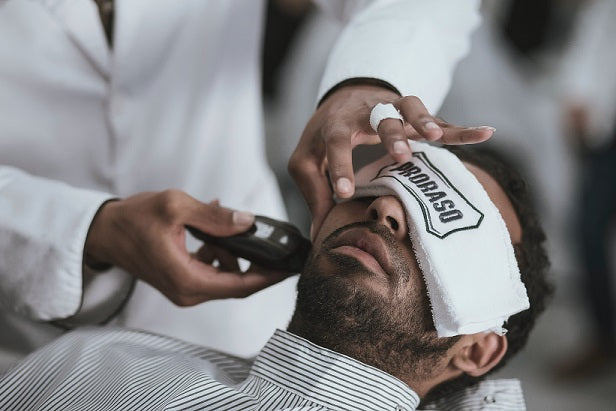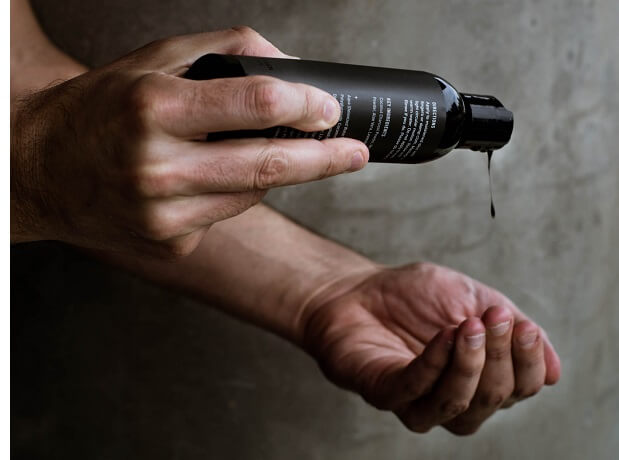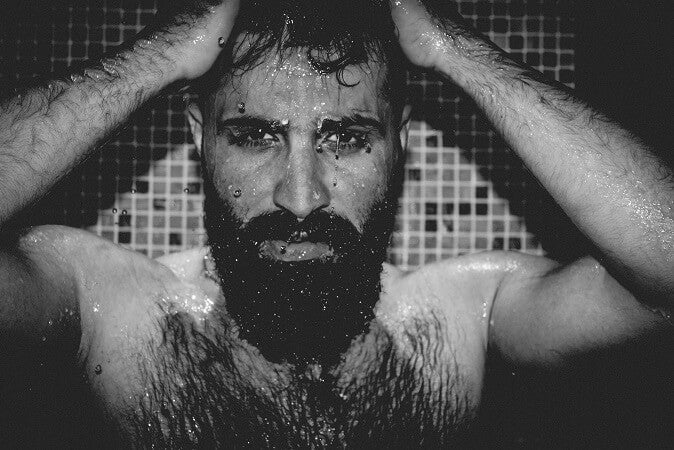
Have you ever wondered why do I get red hairs on my beard? It's a question many people have asked over the years, and unfortunately, there is a lot of myths and misconceptions surrounding the answer. We will be looking to debunk some of the myths and misconceptions about why red hairs appear on your beard and the science behind the real cause.
It's Not Dirty
Red hairs on your beard are actually a genetic trait. They're caused by a pigment called pheomelanin, which gives your hair a red or orange hue. This pigment is also responsible for freckles and other skin discolorations.
So if you're sporting a red beard, there's no need to worry about people thinking you're unclean. Your beard is just showing off your unique genetics. In fact, many people find red beards to be quite attractive.
Of course, this doesn't mean you can neglect your beard grooming routine. Keeping your beard clean and well-maintained is still important for both hygiene and aesthetics. But don't blame those fiery red hairs for any perceived lack of cleanliness. They're just a natural part of who you are.
It's Not a Sign of Poor Health
Have you ever been told that red hairs on your beard are a sign of poor health? This is one of the biggest misconceptions about red hairs on the beard that needs to be cleared up. The truth is that the color of your hair is determined by melanin, a pigment produced by your body. This pigment comes in two types: eumelanin, which produces brown and black hair, and pheomelanin, which produces red and blonde hair.
So, if you have red hairs on your beard, it doesn't necessarily mean that you're unhealthy. In fact, studies have shown that people with red hair may actually be less susceptible to certain health conditions, such as Parkinson's disease. Additionally, red-haired individuals may have a higher tolerance for pain due to a genetic mutation that affects the body's response to pain.
It's important to note that there are some health conditions that can cause changes in hair color, but these are typically accompanied by other symptoms and should be evaluated by a medical professional. For example, a thyroid condition called hyperthyroidism can cause a sudden change in hair color, but it is also associated with symptoms such as weight loss, rapid heartbeat, and tremors.
It's Not a Sign of Aging
One of the common misconceptions about red hairs on your beard is that they are a sign of aging. However, this couldn't be further from the truth. The reality is that red hairs are a genetic trait that can manifest at any age, and they don't necessarily indicate that you're getting older.
In fact, some men are born with red hairs on their beard, while others may develop them later in life due to genetic factors or hormonal changes. Regardless of when they appear, these hairs don't signal a decline in your youth or vitality.
If you're concerned about the appearance of red hairs on your beard, rest assured that it's nothing to worry about. Embrace the uniqueness of your facial hair, and remember that every beard is different and equally beautiful in its own way.
It's Not a Sign of Poor Hygiene
One common misconception about red hairs on a beard is that they are a sign of poor hygiene. However, this is simply not true. The color of your hair, whether it be on your head or on your face, is determined by your genetics.
Red hairs on a beard are usually caused by a genetic mutation that affects the production of melanin, which is the pigment that gives hair its color. In fact, many people with red hairs on their beards have them because of their Celtic or Viking ancestry.
So, if you have red hairs on your beard, it does not mean that you are unclean or neglectful with your grooming routine. It's just a natural part of who you are. In fact, many people find red hairs on a beard to be quite attractive and unique.
The important thing to remember is to maintain good hygiene practices, regardless of the color of your hair. Regularly washing and conditioning your beard, using a beard oil to moisturize and nourish the hair and skin, and trimming it regularly with a beard, nose and ear trimmer will help keep your beard healthy and looking its best.
In summary, don't let the myth that red hairs on your beard are a sign of poor hygiene affect your confidence. Embrace your unique features and take care of your beard with proper grooming habits like combing your beard regularly.
The Truth about Red Hairs on My Beard

Have you ever noticed a red hair on your beard and wondered what it means? Many people associate red hairs on their beard with negative connotations, but the truth is that it's completely normal and nothing to worry about.
Firstly, it's important to understand that the color of your hair is determined by genetics. Some people are simply born with red hairs, and that's just the way their body grows hair. It doesn't mean that they are any less healthy or clean than someone with a different hair color.
Secondly, red hairs on your beard do not necessarily mean that you are aging. Although it's common for people's hair to turn gray as they get older, red hairs can still be present even in young adults. So, don't worry about it being a sign of getting older.
Thirdly, red hairs on your beard are not an indication of poor hygiene. The color of your hair has nothing to do with how clean you keep your beard. Regular washing and grooming are essential for healthy facial hair, but the presence of red hairs has nothing to do with cleanliness.
Lastly, it's important to debunk the myth that having red hairs on your beard means that you are dirty. There is no scientific evidence to support this misconception, and it's simply not true. People with different hair colors have different amounts of melanin in their hair, which affects the color.



